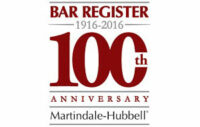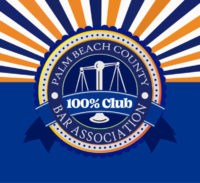Company Knew of Defects — Roof Crush, Seat Belt, Handling & Stability Issues
Late morning on April 12, 2002, Jane Doe, who was fully seatbelted, was driving her full-sized SUV on I-95 when a vehicle came into her lane causing her to swerve to avoid a collision. When she swerved, she lost control and the SUV rolled.
As a result of the rollover, the roof structure failed and crushed inward into the passenger compartment striking Jane Doe on the head and severing her spinal cord and rendering her a quadriplegic.
The National Car Company was negligent in several ways:
- Failed to provide reasonable or adequate user warnings regarding the vehicles high center of gravity, narrow track, short wheel base, and its propensity to rollover.
- Failed to provide reasonable or adequate user warnings regarding the vehicles improper design and manufacture causing inadequate crash protection, the vehicle’s propensity to rollover, and the weakness of the structure of the vehicle body (including the roof) and interior components of the vehicle and failing to provide adequate safety to the vehicle occupants whether in a crash or rollover.
- Failed to adequately warn users of the dangers and defective condition of the vehicle despite that the National Car Company new or should have known of these dangers giving the Plaintiff the right to make a conscious or free decision in light of the unknown risks of operating the vehicle.
- False marketing misled consumers as to the vehicles safety, stability, maneuverability, roadworthiness and crashworthiness.
- Failed to inform public of the vehicles propensity to loose control, rollover, be involved in a fatal or disabling rollover accident both before and after placing the vehicle on the market, even after internal testing showed this problem.
- Failed to inform the public about the vehicle’s lack of crashworthiness and protection for the driver in the event of a rollover
- Negligently designed, manufactured and assembled the SUV using an unsafe plan, design, materials, components, metals, plastics and other parts which would cause the vehicle to lose stability, turn over and/or fail to properly and safety perform with normal foreseeable and anticipated use.
- Negligently designed the vehicle:
- With inadequate rollover resistance.
- From an occupant protection standpoint.
- With poor roof structure thus causing roof structure to fail to maintain integrity during foreseeable rollover.
- Restraint systems, in particular the lap belt, shoulder belt, locking mechanism, anchorages and latch configuration thus failing to full restrain.
- That it had tendency to skate under ordinary and typical driving conditions.
- Improperly and inadequately tested:
- o The SUV and its components in conformity with US industry standards and specification.
- o The vehicle’s roof structure.
- o The vehicle to ensure the design provided reasonable occupant protection in the event of a rollover.
- o The vehicle’s handling and stability characteristics.
- Failed to disclose known problems and defects
- Negligently marketing the vehicle as safe and stable passenger vehicle.
- Failed to meet or exceed internal corporate guidelines.
- Failed to comply with standards of care applicable in automotive industry insofar as providing reasonable occupant protection and rollover protection
- Failed to comply with reasonable and necessary Federal Motor Vehicle Safety Standards
- Failed to notify consumers, as required by law, that a defect exists in the vehicle that relates to public safety.
- Failed to recall or alternatively retrofit the SUV to enhance safety.
Attorney Scott C. Murray settled the case for a confidential amount that will help offset Jane Doe’s medical expenses, pain and suffering and loss of earnings.











